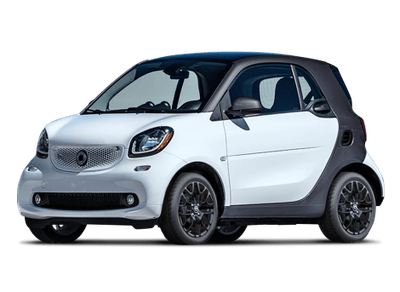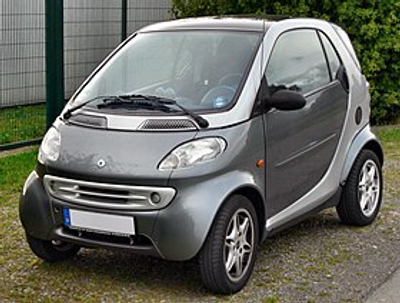

Used Smart Fortwo for Sale in Portugal
Found 1 082 cars
From €1 000 to €120 000
€7 695 (average)
Explore a wide range of used Smart Fortwo cars for sale in Portugal. Find the perfect compact vehicle that suits your needs and budget. Get the best deals and detailed specifications for your next car purchase.
1998 - 2002
The Smart Fortwo Generation 1 was the first model of the popular two-seater city car produced by Smart, a division of the automotive giant Daimler AG. Introduced in 1998, the Generation 1 Smart Fortwo q...
Cabriolet
0.6 AMT (55 hp)
0.6 AMT (61 hp)
0.7 AMT (50 hp)
0.7 AMT (61 hp)
0.7 AMT (75 hp)
0.8 d(41hp) diesel
Hatchback
0.6 AMT (45 hp)
0.6 AMT (55 hp)
0.6 AMT (61 hp)
0.7 (50 hp) robot
0.7 (61 hp) robot
0.7 (75 hp) robot
0.8 AMT CDi (41 hp)
Speedster
0.6 (70 hp) robot
| Name | Value | Unit |
|---|---|---|
| Acceleration (0-100 km/h) | 18.9 | s |
| Back suspension | De-Dion | |
| Body type | Hatchback | |
| Capacity | 599 | cm3 |
| City driving fuel consumption per 100 km | 6.1 | l |
| Cruising range | from 360 to 510 | km |
| Curb weight | 720 | kg |
| Cylinder bore | 63 | mm |
| Cylinder layout | Inline | |
| Drive wheels | Rear wheel drive | |
| Engine power | 45 | hp |
| Engine type | Gasoline | |
| Front brakes | Disc | |
| Front suspension | Wishbone | |
| Front track | 1290 | mm |
| Fuel | 95 | |
| Fuel tank capacity | 22 | l |
| Full weight | 980 | kg |
| Gearbox type | robot | |
| Height | 1529 | mm |
| Highway driving fuel consumption per 100 km | 4.3 | l |
| Injection type | Multi-point fuel injection | |
| Length | 2499 | mm |
| Maximum torque | 70 | N*m |
| Max power at RPM | from 5 250 | RPM |
| Max speed | 135 | km/h |
| Max trunk capacity | 150 | l |
| Min trunk capacity | 150 | l |
| Mixed driving fuel consumption per 100 km | 4.9 | l |
| Number of cylinders | 3 | |
| Number of gear | 6 | |
| Number of seater | 2 | |
| Rear brakes | drum | |
| Rear track | 1349 | mm |
| Stroke cycle | 63 | mm |
| Turning circle | 8 | m |
| Turnover of maximum torque | to 3 000 | RPM |
| Valves per cylinder | 2 | |
| Wheelbase | 1811 | mm |
| Width | 1519 | mm |
